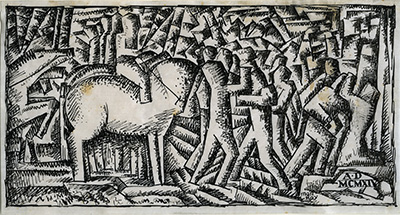![[Francis Naumann]](/4logo.gif)
![[Francis Naumann]](/4logo.gif)

The title of this exhibition—“MAN RAY: CONTINUED and NOTICED”—is a direct response to the title Man Ray gave to his show at the Copley Galleries in Beverly Hills, California, in 1948, which he called “To Be Continued Unnoticed.” Man Ray must have wanted these words to let his audience know that he was still working (“continued”), but that he worked with virtually no recognition (“unnoticed”). The present exhibition—held 68 years after his show at the Copley Galleries—is intended to demonstrate that Man Ray’s work not only continues to be of interest, but that it is still noticed and, with the passage of time, better understood and appreciated (although the latter may never have been his intent). Moreover, it is hoped that Man Ray will no longer be viewed exclusively as a photographer (a goal he clearly shared), but as the protean, multi-media and multi-disciplinary artist that he was. He was a highly skilled draftsman, a painter, object-maker, photographer, filmmaker and author. By the time he moved to California in 1940, he had spent some 20 years working in Paris as a professional photographer and, in the process, became internationally known for his talents behind the camera and for his experiments in the darkroom (especially for his inventive use of new techniques: the rayograph and solarization). At this point in his life (when his show was held at the Copley Galleries he was 58 years old), Man Ray realized that his reputation as a photographer had overshadowed his creative output in all other media, a misconception that he made every effort to correct. Above all, he wanted people to understand that he was a thinker who employed whatever means were necessary to best express an idea, whether that be through drawing, painting, combining objects, or, in select circumstances, even photography. It was for this reason that Man Ray included earlier paintings in his Copley Galleries show, from a sketch made for a mural in 1912 (now lost), to works produced in New York and Ridgefield in the years immediately preceding his move to Paris in 1921, a formative phase in his career that, in retrospect, he realized was crucial to an understanding of his subsequent development as an artist.
